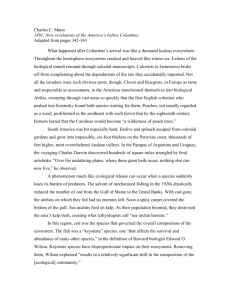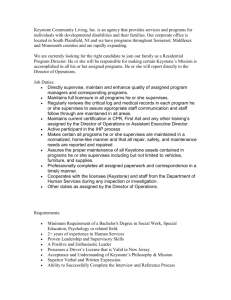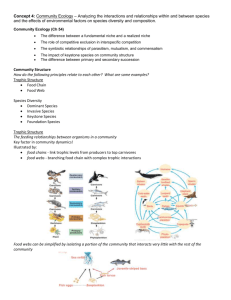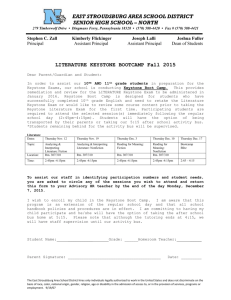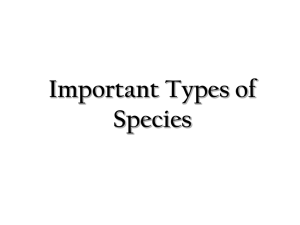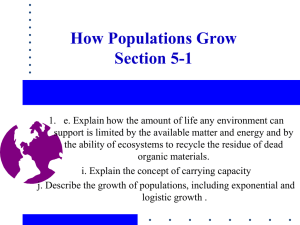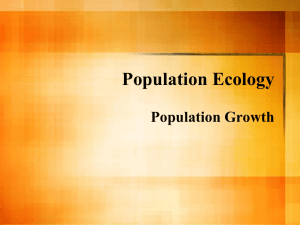Food Chain Size Limits: Energetics, Stability, Keystone Species
advertisement
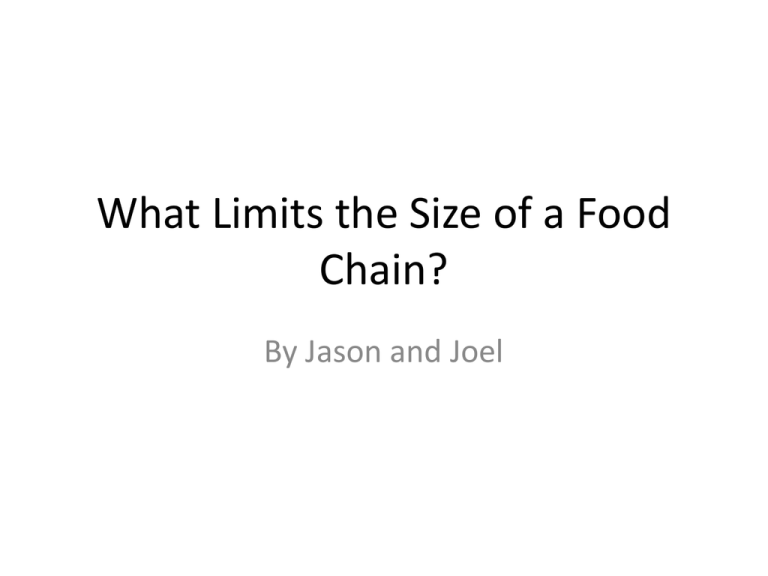
What Limits the Size of a Food Chain? By Jason and Joel 3 major limitations on a Food Chain • Energetic Hypothesis • Dynamic Stability Hypothesis • Loss of Keystone Organisms Energetic Hypothesis • The length of a food chain is limited by the inefficiency of energy transfer along the chain. Energetic Hypothesis • About 10% energy stored in organic matter of each trophic level is converted to organic matter in the next trophic level. Dynamic Stability Hypothesis • Long food chains are less stable than short food chains. • Population fluctuations in lower trophic levels are magnified at higher levels, potentially causing local extinctions. Dynamic Stability Hypothesis • Top predators must be able to recover from environmental shocks that can reduce food supply all the way up the chain. • If they chain is long it takes longer for the top predators to have shock be suppressed. Effects of Keystone Species • Keystone species- a species that is not necessarily abundant in a community yet exerts strong control on community structure by the nature of its ecological role or niche. • If a keystone species is not present, the chain collapses • Example of a keystone species: sea otter Keystone Species cont. • Sea otters are important to the offshore kelp forest ecosystem. • Kelp are fast-growing seaweeds that live in submerged forests near the ocean shore. • Otters feed and play in the kelp forests, where they dine on sea urchins Keystone species cont. • When sea otters are hunted for their fur, it caused their population to decline precipitously • As a result, sea urchins destroyed kelp forests by eating the holdfasts that attach the seaweeds to the ground, destroying the kelp forest leaving fish and shellfish homeless. Other Keystone Species • Other keystone species include the gray wolf, sea stars, prairie dogs, and northern spotted owls.

